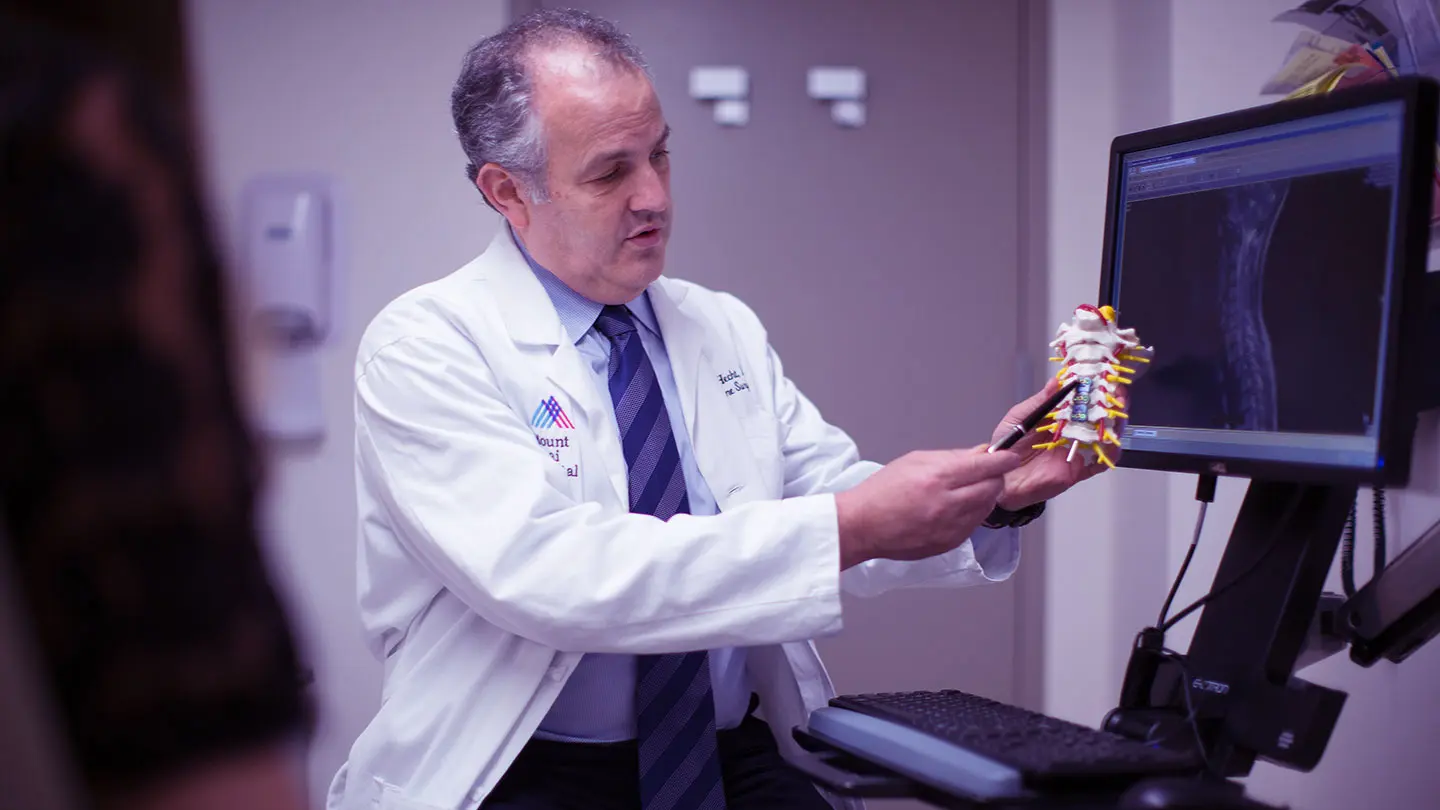According to the National Spinal Cord Injury Statistical Center, approximately 7 percent of spinal cord injuries are sports-related. While the numbers have decreased over the past few decades due to awareness and preventive measures, an injury of this nature is concerning for an athlete. Fortunately, Mount Sinai orthopedists have shown that spinal cord injuries do not have to signal the end of an athletic career. With effective diagnosis, treatment, and management, many athletes can safely return to play with a full and painless range of motion.
When Conservative Treatment May Suffice
A case in point is lumbar disc herniation and lumbar spondylolysis, which are among the most common lumbar injuries affecting players of all ages in both contact and noncontact sports. According to Andrew Hecht, MD, Chief of Spine Surgery for The Mount Sinai Hospital and the Mount Sinai Health System, 85 percent to 90 percent of athletes with lumbar disc herniation can return to play following conservative treatment that includes rest, epidural steroid injections, and physical therapy. Treatment for lumbar spondylolysis usually involves a trunk isometric strengthening program and possible bracing. Less commonly, recurrent back pain from spondylolysis may indicate surgery.
“Ongoing rehabilitation and strengthening programs can support lifetime spinal health, particularly for herniated discs and spondylolysis,” says Dr. Hecht, who is Professor of Orthopedic Surgery, and Neurosurgery at the Icahn School of Medicine at Mount Sinai. “Athletes increasingly recognize that these practices can help their performance, even when they have no pain and feel fine.”
Proper Evaluation Remains Critical
Other cervical spine injuries are more concerning. Among these are so-called “stingers” or “burners,” where contact or collision triggers what players often describe as a “jolt of lightning,” or an episode of tingling, numbness, or weakness in an extremity lasting from just seconds to days. While this condition is relatively harmless, prolonged stingers or burners may require evaluation of the cervical spine with magnetic resonance imaging (MRI) or other modalities like electromyography or nerve conduction.
“Athletes with this condition can safely return to their sport after showing normal neurological results, being free of pain, and regaining full motion,” says Dr. Hecht.
Cervical cord neuropraxia is also cause for concern. This possible compression of the spinal cord results in neurological symptoms affecting either both arms or both legs, an arm and a leg, or all four limbs. Because cervical cord neuropraxia can be confused with stingers or burners, orthopedists, sports medicine providers, athletic trainers, and internists usually need training to distinguish between the two. Neuropraxia, for its part, precludes an immediate return to play, even if the initial symptoms subside quickly.
“It is imperative to evaluate the patient to identify the underlying cause,” says Dr. Hecht. “Those without spinal lesions can sometimes return to play once they are asymptomatic and regain full range of motion.”
However, congenital stenosis—that can lead to neuropraxia—is almost always contraindicated for a return to play because of its greater than 50 percent likelihood of recurrent injury, particularly in contact and collision sports. Interestingly, many athletes with previously undiagnosed congenital stenosis never recall any warning signs of cervical cord neuropraxia until they sustain a severe injury, including quadriplegia. For that reason, Dr. Hecht points out, most spine surgeons believe that one or two cervical cord neuropraxias in the context of congenital stenosis are a contraindication to continued sports activity.
An athlete with a disc herniation as the source of their cervical cord neuropraxia can return to play, however, once the herniation has been surgically repaired. Former National Football League quarterback Peyton Manning is a high-profile example of an athlete whose successful treatment of a cervical disc herniation enabled him to continue a storied football career.
Severe fractures that cause neurologic damage constitute another injury that can permanently sideline an athlete, as can other congenital anomalies that someone might be unaware of until their first injury.
Prevention is Key
“While sports orthopedists have greatly enhanced our ability to diagnose and treat serious spinal conditions, prevention is proving to be just as important to maintaining spinal health,” emphasizes Dr. Hecht.
In recent years, athletes, trainers, and sports medicine professionals have been thoroughly educated on safe physical contact to reduce the occurrence of devastating injuries in contact and collision sports. Head-down tackling and spearing in football, for example, has been found to have a high prevalence of paralysis and severe injury. Because of this, the method has been banned at all level of sport. The alternative, heads-up tackling, dramatically reduces the incidence of spine injuries and fractures.
Says Dr. Hecht, “Most athletes know there is life after sports and do not want to compromise their future health by returning to unsafe situations. Physicians can support these goals by providing accurate diagnosis as well as effective treatment—allowing the athlete to safely return to sport while preserving their long-term health.”
Featured

Andrew C. Hecht, MD
Professor Orthopedic Surgery and Neurosurgery
